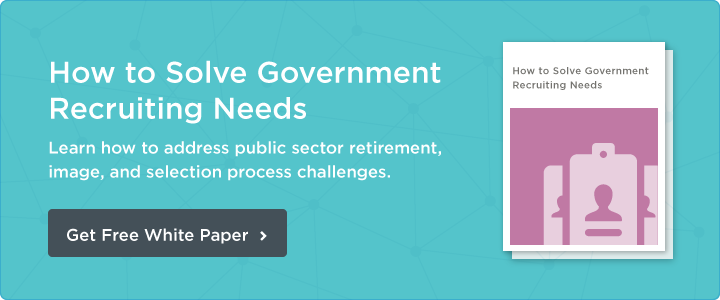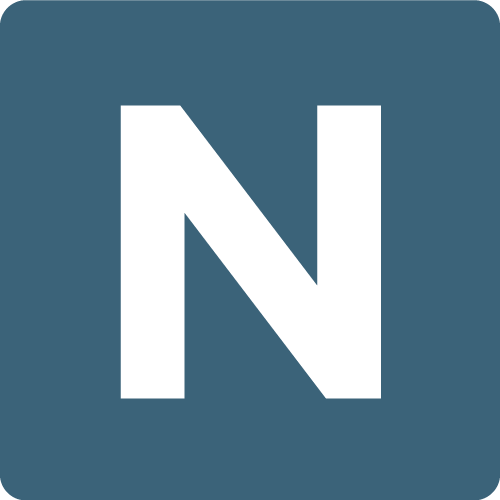Learn how to improve your overall hiring process with these helpful ideas on how to say thank you for your job application.
Article Highlights:
- How a thank you page can help your analytics and conversion tracking
- Why you should include details about your hiring process
- The importance of testimonials in your application follow-ups
- The importance of social media
- How a feedback form can help shape your interview process
One way to improve your agency's brand reputation, especially when it comes to hiring diverse candidates or getting past employees to return, starts with your "thank you for your job application" page after someone successfully completes an online application.
Thirty and more years ago, during a job search, it wasn't uncommon for organizations to send thank you letters for acknowledgment of a job application. Later, when an applicant was rejected during any part of the application process, another letter was sent thanking them for their interest but explaining that they weren't being considered any longer.
Now, in the days of email and automation, many organizations can't be bothered by those niceties. They may send out an automated email after a candidate completes the application process, but they won't notify the candidate of their status or rejection. The candidate just comes to realize that, after three months, they probably won't hear from that employer at all.
Depending on your organization, a poor hiring process (including poor interviews by a hiring manager) can negatively impact your agency's brand and how you're perceived by customers or constituents. Virgin Media in the UK discovered that their bad candidate experiences were costing them £4 million in lost revenue per year. So they restyled their entire application process and began training hiring managers to deliver better experiences, which helped them reduce their losses.
Agencies that want to improve their brand reputation, especially as they're trying to attract Millennial and BIPOC job candidates, can start by improving their "thank you for your job application" message. This can happen on your website or in a follow-up email afterward.
This article will show you thank you page best practices that can change your analytics and conversion tracking, the importance of detailing your hiring process, how to use testimonials and social media, and how asking for feedback can benefit your application process.
Analytics and Conversion Tracking
Your human resources department should absolutely measure its job recruitment efforts. Not sure where to start? Measure the number of completed applications versus started applications. The number of abandoned applications. The source of the application traffic, whether it's from social media, job boards, referrals, or advertisements.
You can get a firm grasp on the effectiveness of your recruiting efforts just by looking at the source of applications and the number of completions. With this data, ask yourself:
- Have your efforts increased your applicant pool?
- Are a large number of applicants completing the process or abandoning it?
- What percentage of applicants make it past the first round of résumé reviews?
- Which job title gets the most traffic?
- How many people actually receive the job application thank you email versus applying for the process?
You can track the delivery and open rate of each email to see if candidates read your message. And you can test different email subject lines to see if that changes open and read rates.
If nothing else, these analytics can show you any bottlenecks and errors on your website. But they can also show where you should be putting more money and energy, and where you should be pulling back.
If you use real-world recruiting efforts, like college recruiting and job fairs, you can also track those efforts and determine whether in-person events are successful or should be dropped. You can enter the information of the people you meet – name, email address, and meeting information – into your applicant tracking software and include them in your regular analysis.
Good applicant tracking software can show you which channels are bringing in the best candidates, what the best candidates have in common, and the cost per hire for a position. This information can even tell you what platforms are best for each job title and function.
Deliver Extra Instructions
Some organizations require online personality assessments of their job candidates, like the Meyers-Briggs or DISC profile. They explain that it's part of the hiring process (see below), and send out occasional reminders with links to the assessment.
Another place to remind candidates to take these assessments is on your applicant thank you page. Post a link to the assessment, along with any instructions, on the page and see if candidates will go directly to the assessment. That will help speed up the application process and move candidates through the system faster.
Details About Your Hiring Process
When you're creating your "thank you for your job application" messaging, whether it's an email or a web page, you can help your candidates understand the entire hiring process and how long it’s going to take.
Some websites show a timeline/checklist that explains whether candidates will have any assessments, phone interviews, or in-person interviews during the entire process. The Indiana state government's website explains the entire hiring process for all candidates in any role within any department, starting from their receipt of a résumé and cover letter through to the official job offer.
By spelling out the process, candidates know how to plan, especially if they're applying for several different jobs. Doing this for your candidates can put them at ease so they know what to expect and when to expect it. They'll know that if your process is going to take four months, they can make an informed decision about an application process that will go much faster.
Knowing the next steps can also help candidates better prepare for the next step in the process. They'll figure out what questions to ask, how to dress for the interviews, and what information they'll need to have one hand during each stage of the process.
Testimonials
A lot of job recruitment websites include testimonials on the Life At/About Us pages on an organizaton's website. But consider putting testimonials on your application completion page, as well. It's a nice encouragement to your candidates, and it has the power to improve your brand reputation around hiring efforts.
Many organizations use employee testimonials, whether those are written notes, social media updates, or videos. By including these on your completion page, you can reinforce the message of your organization's diversity, equity, and inclusion efforts. You can also increase your talent pool by asking candidates to refer people to your jobs page.
Links to Your Social Media
When sending out a thank you letter for acknowledgment of job application submissions, some organizations include links to their social media accounts. But if your organization is large enough to have its own accounts for recruiting, it's better to link to those social accounts instead.
If nothing else, you may find applicants who weren't right for the position they applied for, but you don't want to lose touch with them. By getting them to connect with your social media recruiting networks, you can encourage them to apply to new positions and bring them into your organization later.
Plus, if you're worried about losing revenue as a result of candidates being unsatisfied with their application experience, like Virgin Media experienced, connecting on social media can help reinforce your marketing message to them and keep them interested in you as a brand they want to do business with.
And as your marketing team will no doubt tell you, there’s no wrong place to put your social media links, so this should make them happy.
A Feedback Form
Want to improve your job application process? Ask the candidates who complete the application process for their feedback. After all, there are far more rejected candidates than accepted ones, and rejected candidates will give you a larger pool of data to draw from.
You can either send them a link to the feedback form in their job application thank you email, or you can include the link on your final completion page. But be careful about sending candidate experience surveys while the candidates are still in the hiring process. They may give you inflated answers and false positives because they think it will keep them in the process longer.
Instead, deliver the forms after they’re rejected because they're likely to be honest about their answer – brutally so, in fact – and you'll get more accurate feedback.
When you send the follow-up email, assure the candidates that their feedback is anonymous and that their responses won't affect future applications.
Next, ask them for honest feedback about the application process. Was it too long? Were the instructions clear? Do the requirements seem too restrictive or too vague?
While no one wants to be on the receiving end of negative reviews, those reviews can be some of the best feedback you receive. Pay attention to the kernels of truth contained in the responses and look for ways to improve.
As you revamp your interview process, you'll find that your feedback scores will go up, and, while your rejected candidates may not like the news, they'll at least appreciate that you took the time to show you cared about their experience.
Final Thoughts
The final "thank you for your job application" page in your organization's application process plays a major role in keeping candidates interested. It can help improve your organization's brand, showcase the benefits of working there, increase customer satisfaction, and solicit feedback from candidates.
Your thank-yous can be more than just a quick note dashed off via email – so use them to leverage your relationship with strong candidates and create a lasting impression for your brand.
To learn more about how a thoughtful candidate experience can help your recruitment efforts, visit our website.

